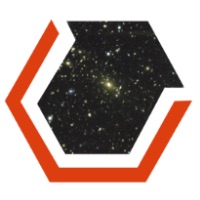 Dark Energy Survey logo | |
| Alternative names | DES |
|---|---|
| Website | www |
| | |
| Part of a series on |
| Physical cosmology |
|---|
 |
The Dark Energy Survey (DES) is an astronomical survey designed to constrain the properties of dark energy. It uses images taken in the near-ultraviolet, visible, and near-infrared to measure the expansion of the universe using Type Ia supernovae, baryon acoustic oscillations, the number of galaxy clusters, and weak gravitational lensing.[1] The collaboration is composed of research institutions and universities from the United States,[2] Australia, Brazil,[3] the United Kingdom, Germany, Spain, and Switzerland. The collaboration is divided into several scientific working groups. The director of DES is Josh Frieman.[4]
The DES began by developing and building Dark Energy Camera (DECam), an instrument designed specifically for the survey.[5] This camera has a wide field of view and high sensitivity, particularly in the red part of the visible spectrum and in the near infrared.[6] Observations were performed with DECam mounted on the 4-meter Víctor M. Blanco Telescope, located at the Cerro Tololo Inter-American Observatory (CTIO) in Chile.[6] Observing sessions ran from 2013 to 2019; as of 2021[update] the DES collaboration has published results from the first three years of the survey.[7]
- ^ "Home". The Dark Energy Survey.
- ^ DES Collaboration Page, DES Collaborators.
- ^ DES-Brazil Archived 2014-10-22 at the Wayback Machine, DES-Brazil Consortium.
- ^ "The Dark Energy Survey Collaboration". www.darkenergysurvey.org. Retrieved 2015-11-21.
- ^ The Project - The Dark Energy Survey Collaboration, The DES Project Site.
- ^ a b Dark Energy Camera (DECam) Archived 2019-05-23 at the Wayback Machine, Cerro Tololo Inter-American Observatory.
- ^ "DES Year 3 Cosmology Results: Papers". The Dark Energy Survey. Retrieved 3 August 2021.